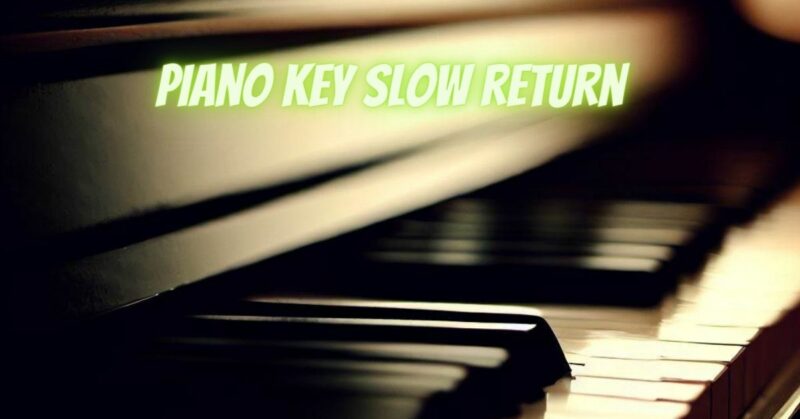A piano key that returns slowly after being pressed can disrupt your playing experience and hinder your ability to execute rapid passages or maintain proper rhythm. In this article, we will explore common causes of a slow-returning piano key and provide practical solutions to address the issue.
- Friction or Binding:
a. Friction between the key and its surrounding components, such as the key bushings or balance rail pins, can impede smooth key movement.
b. Inspect the affected key for any visible signs of friction or binding. Apply a small amount of graphite or key lubricant to the contact points, following the manufacturer’s instructions, to reduce friction and promote smoother key return.
- Damaged or Worn Key Components:
a. Over time, key components such as the key bushings, balance rail pins, or keyframe felts can become worn or damaged, affecting key movement.
b. Carefully examine the key components for signs of wear, deterioration, or damage. If necessary, consult a professional piano technician to replace the worn or damaged parts, ensuring proper key function.
- Accumulation of Dirt or Debris:
a. Dirt, dust, or debris that accumulates within the key mechanism can hinder key movement and cause sluggish key return.
b. Gently clean the key mechanism using a soft brush or compressed air to remove any dirt or debris. Be cautious not to use excessive force that could damage delicate components.
- Misaligned Key or Key Frame:
a. A misaligned key or key frame can disrupt the smooth movement of the key, resulting in a slow return.
b. Carefully examine the alignment of the affected key relative to the adjacent keys. If misalignment is detected, consult a professional piano technician to realign the key or adjust the key frame to ensure proper movement.
- Environmental Factors:
a. Changes in temperature and humidity can affect the wooden components of a piano, including the keys, causing them to swell or shrink.
b. Maintain a consistent humidity and temperature level in the piano’s environment to minimize the impact on key performance. Use a piano humidifier or dehumidifier if necessary.
Conclusion:
A piano key that returns slowly can disrupt your playing and affect your overall musical expression. By addressing common causes such as friction or binding, damaged key components, accumulation of dirt or debris, misalignment, and environmental factors, you can restore smooth and responsive key movement. If you are unsure or uncomfortable with performing the necessary repairs or adjustments, it is recommended to seek the assistance of a professional piano technician. Regular maintenance and care will ensure that your piano keys function optimally, allowing you to enjoy your playing experience to the fullest.

